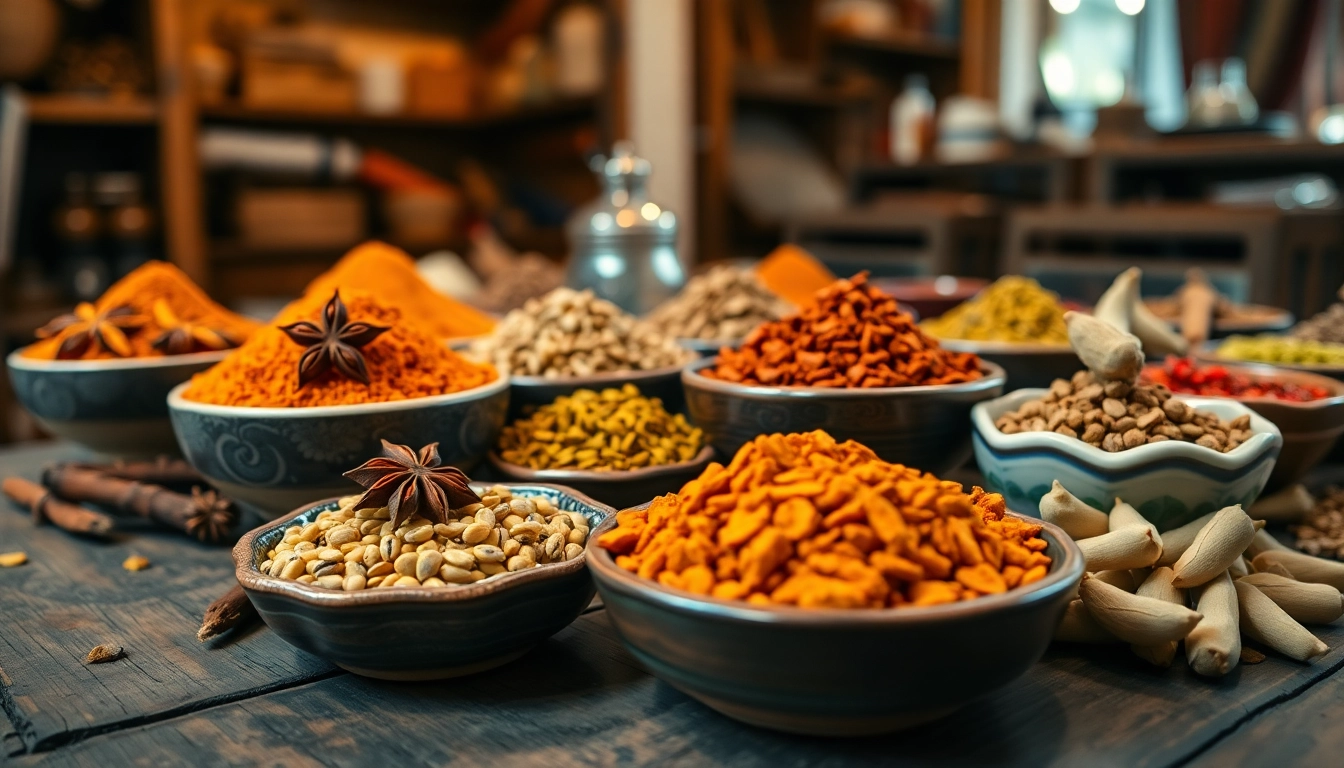Understanding Cinnamon Bark
What is Cinnamon Bark?
Cinnamon bark is harvested from the inner bark of trees belonging to the genus Cinnamomum. This aromatic bark is widely recognized for its distinct flavor and fragrance, making it a popular spice across the globe. It is commonly used in both cooking and baking, and has been valued not just for its culinary applications, but also for its health-promoting properties. The most frequently encountered varieties of cinnamon in the market are Ceylon cinnamon (Cinnamomum verum) and Cassia cinnamon (Cinnamomum cassia), which differ in flavor, quality, and health benefits. To explore more about this enticing spice, you can check out this Cinnamon Bark page.
Differences Between Cinnamon and Cassia
Understanding the nuances between various types of cinnamon is essential for consumers and culinary enthusiasts alike. Ceylon cinnamon, often referred to as “true” cinnamon, is characterized by its sweet and delicate flavor profile and contains lower levels of coumarin, a compound that can be harmful in large amounts. On the other hand, Cassia cinnamon is more pungent and has a stronger flavor, making it a popular choice in commercial products. Importantly, Cassia is the more affordable option, which is why it comprises the bulk of cinnamon sold globally. However, the choice between these two types should go beyond cost, considering the potential health implications associated with coumarin intake from excessive consumption of Cassia cinnamon.
How Cinnamon Bark is Harvested
The process of harvesting cinnamon bark is both intricate and labor-intensive, typically done by hand. Skilled workers carefully peel away the outer bark of the cinnamon tree to reveal the inner bark, which is then harvested in strips. These strips are then curled into quills and dried, resulting in the cinnamon sticks that are familiar to many. The harvesting usually occurs during the dry season to ensure quality and flavor retention. Furthermore, sustainable practices are critical in cinnamon production to maintain the ecological balance and ensure the long-term viability of cinnamon trees.
Health Benefits of Cinnamon Bark
Cinnamon Bark for Digestive Health
Cinnamon bark has been traditionally used to alleviate various digestive issues. Its carminative properties help in reducing gas and bloating, thus supporting better digestive health. Additionally, cinnamon has antimicrobial properties that can help combat pathogens affecting the gut. Some studies suggest that cinnamon can improve gut motility and may even protect against certain gastrointestinal disorders. Consuming cinnamon regularly may help alleviate symptoms of nausea and discomfort from indigestion.
Anti-Inflammatory Properties of Cinnamon Bark
One of the most compelling health benefits of cinnamon bark is its anti-inflammatory effects. The presence of polyphenols and other antioxidants in cinnamon contributes to reducing inflammation and can help in managing chronic inflammatory diseases. Research indicates that regular consumption of cinnamon may lower markers of inflammation in the body, thus promoting better overall health. Cinnamon’s anti-inflammatory properties can aid in conditions such as arthritis and other inflammatory disorders.
Potential Benefits for Blood Sugar Control
Another notable benefit of cinnamon bark is its potential role in blood sugar regulation. Several studies have indicated that cinnamon can enhance insulin sensitivity, which is crucial for blood sugar management. This property makes cinnamon a popular supplement for individuals dealing with diabetes and metabolic syndrome. While it is not a substitute for conventional treatments, incorporating cinnamon into your diet may complement other interventions aimed at controlling blood sugar levels.
Culinary Uses of Cinnamon Bark
How to Incorporate Cinnamon Bark in Cooking
Incorporating cinnamon bark into your culinary repertoire can enhance the flavor of numerous dishes. Whole cinnamon sticks can be added to teas, stews, and braises; their slow infusion of flavor creates a warm, comforting essence. Additionally, powdered cinnamon can be sprinkled into baked goods, oatmeal, or smoothies to provide a natural sweetness without added sugar. When using cinnamon in savory dishes, it pairs well with meats, fruits, and grains, enhancing both sweet and savory profiles.
Traditional Dishes Featuring Cinnamon Bark
Many cultures around the world have embraced the rich flavor of cinnamon. In traditional Middle Eastern cuisines, cinnamon is often used in rice pilafs and savory meat dishes. In Indian cooking, it is an essential ingredient in garam masala, a key spice blend used in numerous curries. Moreover, cinnamon is a staple in various baked goods, such as muffins, rolls, and pancakes, lending that signature warmth to breakfast treats. Regardless of the culture, cinnamon’s versatility makes it a beloved spice.
Creative Recipes Using Cinnamon Bark
For those looking to experiment, here are some creative ways to use cinnamon bark in your cooking:
- Cinnamon-Spiced Roasted Vegetables: Toss your favorite root vegetables with olive oil, and add a few broken cinnamon sticks before roasting for an aromatic finish.
- Cinnamon Hot Chocolate: Simmer milk or your favorite non-dairy alternative with cocoa powder, sugar, and a cinnamon stick for a cozy treat.
- Cinnamon Tea: Brew a comforting herbal tea by steeping cinnamon sticks with chamomile or green tea leaves for a soothing drink.
Choosing Quality Cinnamon Bark
Identifying Authentic Cinnamon Bark
When purchasing cinnamon, it’s vital to be able to distinguish between authentic Ceylon cinnamon and the more commonly found Cassia cinnamon. Authentic cinnamon should have a sweet aroma and multiple thin layers, while Cassia is typically thick and hard. Smelling the bark can also provide clues: true cinnamon has a more complex, sweet scent, while Cassia has a harsh and pungent aroma. Reading labels and checking for certifications can further help in determining the quality of cinnamon.
Where to Buy Premium Cinnamon Bark
Premium cinnamon bark can be found at specialty spice shops, health food stores, and online retailers. Look for reputable brands that offer organic options to ensure you are getting high-quality, chemical-free cinnamon. Farmer’s markets may also provide opportunities to purchase locally sourced cinnamon, which can be a fresher alternative. Always choose suppliers that prioritize sustainability and ethical practices in their harvesting methods.
Storage Tips for Cinnamon Bark
To maintain the flavor and effectiveness of cinnamon bark, proper storage is essential. Keep whole cinnamon sticks or powder in an airtight container away from light, heat, and moisture to prevent degradation of flavor and potency. Whole sticks can last up to three years when stored correctly, while powdered cinnamon should ideally be consumed within six months for the best taste. Regularly check for freshness and replace as needed.
Frequently Asked Questions about Cinnamon Bark
Is Cinnamon Bark Safe for Everyone?
Generally, cinnamon bark is safe for most people when consumed in culinary amounts. However, those with specific health conditions or those taking certain medications, including blood thinners, should consult a healthcare provider before increasing their cinnamon intake. Pregnant and breastfeeding women are also advised to moderate their consumption and seek professional advice.
How to Use Cinnamon Bark Extract?
Cinnamon bark extract is available in various forms, including capsules, powders, and liquid extracts. It can be added to smoothies, teas, or yogurts for a health boost. To use it effectively, follow the recommended dosage on the product label, and always choose high-quality, reputable brands to ensure safety and efficacy.
What are the Side Effects of Cinnamon Bark?
While cinnamon is generally considered safe, excessive consumption may lead to side effects, including digestive discomfort, allergic reactions, or interactions with medications. It’s essential to consume cinnamon in moderation and consult with healthcare professionals if you have any concerns regarding potential side effects.



